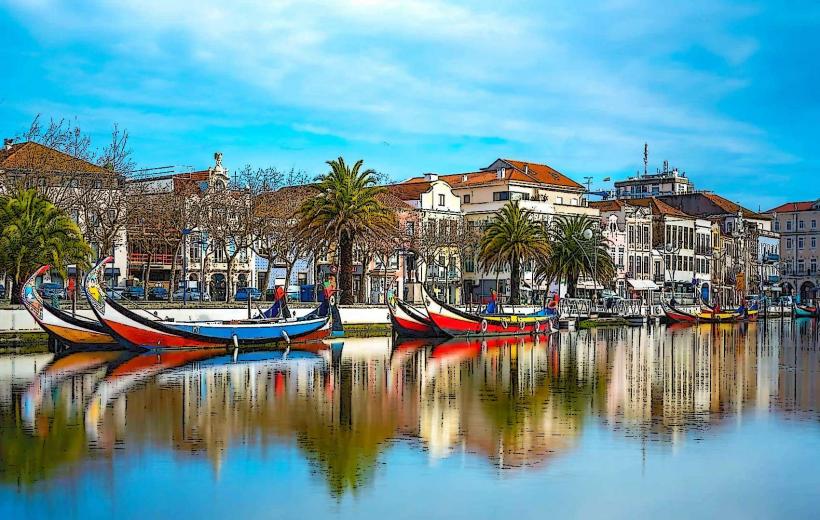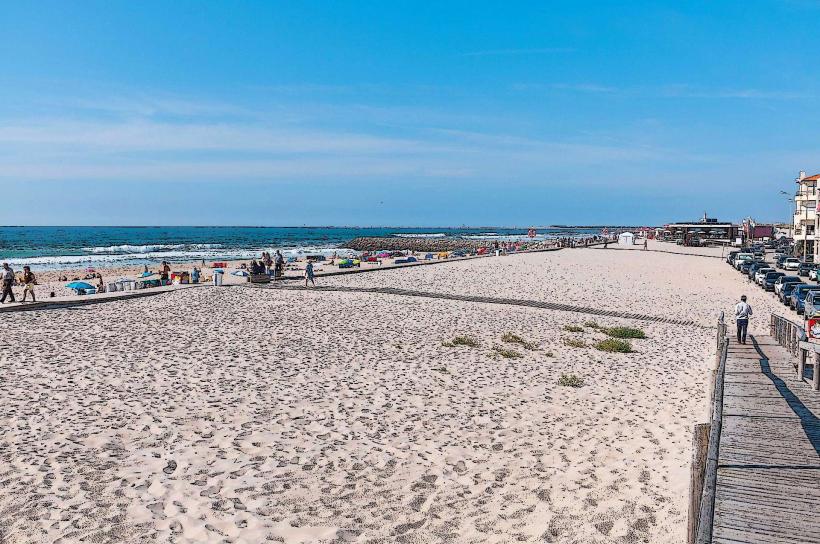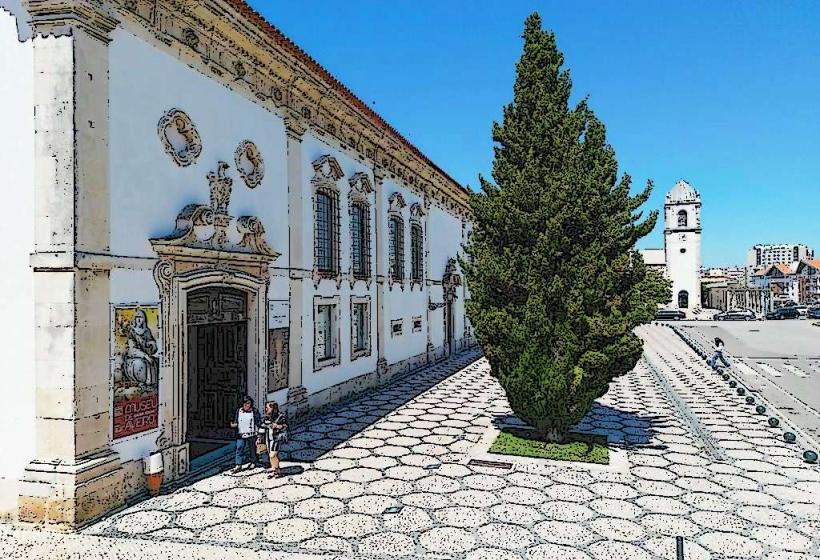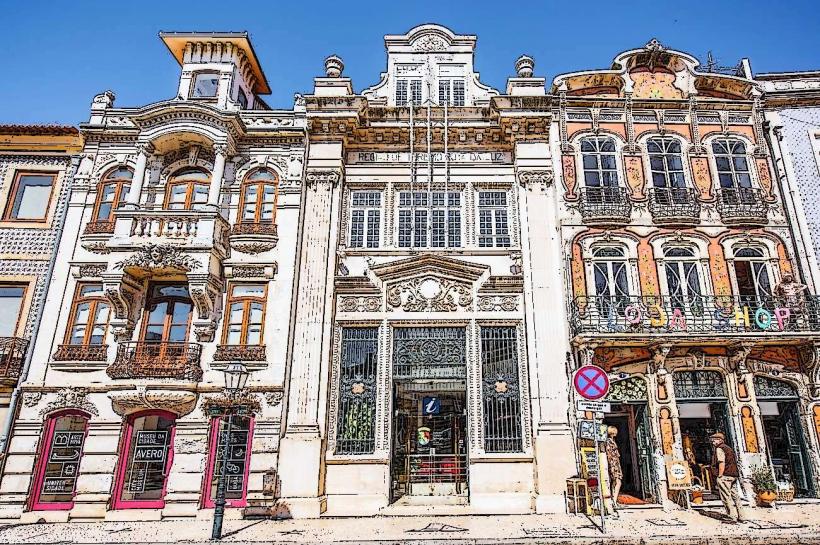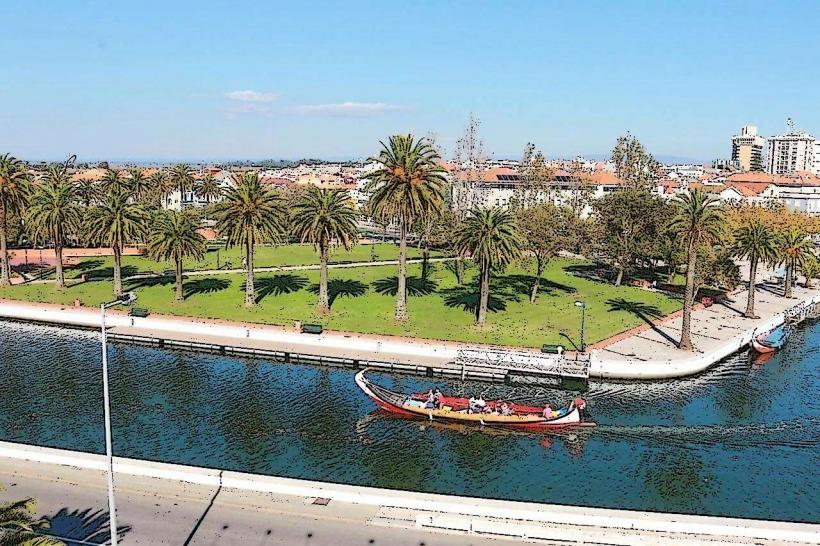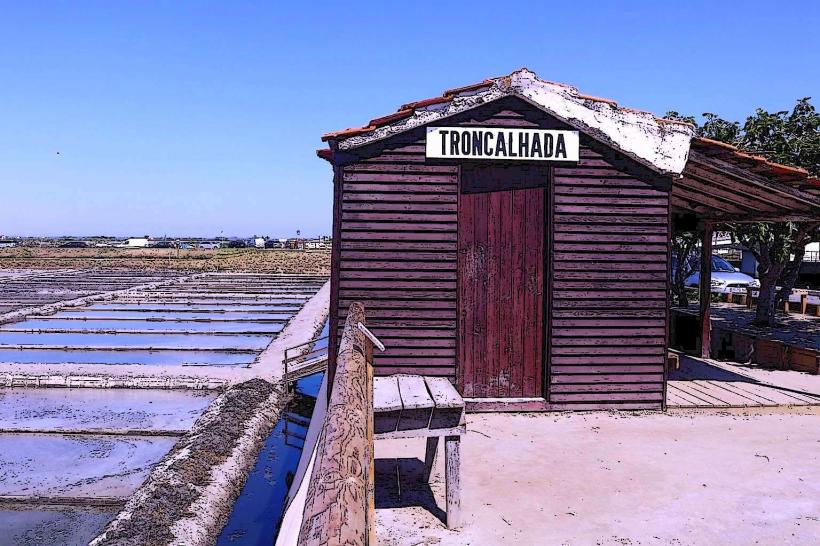Information
Landmark: Cathedral of AveiroCity: Aveiro
Country: Portugal
Continent: Europe
The Cathedral of Aveiro (Catedral de Aveiro), also known as the Church of São Domingos (Igreja de São Domingos), is an important historical and religious monument in the city of Aveiro, Portugal. Situated in the heart of the city, it holds both architectural and cultural significance as one of the primary religious sites in the region.
1. Historical Background
- The origins of the Cathedral of Aveiro date back to the 15th century. It was originally constructed in a Gothic style as part of the Monastery of São Domingos, which was associated with the Dominican Order. The monastery and church were established around the time that Aveiro was growing in importance, and the construction of the church reflects the religious and economic prosperity of the region during this period.
- The cathedral was built on the site of a previous chapel, which had been used for religious services in the city. Over the centuries, the church has undergone significant alterations, particularly during the Baroque period, when much of the church's interior was redesigned and refurbished in the ornate style typical of the era.
- The church's status as a cathedral came in 1759 when Aveiro was elevated to the status of a diocese by King Joseph I of Portugal, a part of the broader restructuring of the Catholic Church in Portugal.
2. Architectural Features
- Exterior: The exterior of the Cathedral of Aveiro is relatively austere compared to some of the more elaborate churches in Portugal, but it features a Baroque façade that was added in the 18th century. The façade includes decorative elements such as pillars, pilasters, and an arched door, as well as a stone bell tower that stands prominently over the church.
- Bell Tower: The bell tower, or campanile, is one of the most striking features of the Cathedral of Aveiro. It stands as a symbol of the church’s presence in the city and is a significant point of reference in the urban landscape of Aveiro. The tower is topped with a baroque-style spire and is often visible from different parts of the city.
- Interior: The interior of the cathedral has undergone significant changes, particularly in the Baroque era, which led to the inclusion of a number of richly decorated altarpieces and wooden carvings. The nave of the church is adorned with stucco decorations and wooden sculptures. The high altar is a magnificent example of Baroque craftsmanship, with an intricate design that incorporates gold leaf, woodwork, and religious imagery.
- Chapel of Saint Dominic: One of the most important parts of the church is the Chapel of Saint Dominic, the founder of the Dominican Order, which includes a large altarpiece with ornate carvings and a statue of Saint Dominic.
3. Art and Decoration
- The Cathedral’s interior features a variety of Baroque art, including altarpieces, paintings, and sculptures, most of which were added during the 17th and 18th centuries. The retables (altarpieces) are some of the most elaborate examples of Baroque wood carving in Portugal, with gold-leaf decorations and figures of saints.
- Chandeliers, paintings, and religious symbols fill the nave, creating a visually rich experience for visitors. Some works are from Portuguese artists of the period, illustrating the connection between the church and local artistic traditions.
4. Religious Importance
- As the main cathedral of Aveiro, it is a central hub for Catholic worship and religious ceremonies, particularly in the city’s liturgical calendar. The church is still used for daily services, special feasts, and annual religious processions, which attract both locals and pilgrims.
- Sanctuary of Our Lady of the Conception: The cathedral is also the place of devotion to Our Lady of the Conception (Nossa Senhora da Conceição), the patroness of Aveiro. Many visitors come to pay homage to the statue of the Virgin Mary, which is located in a prominent position within the church.
5. Visiting the Cathedral
- Opening Hours: The cathedral is open to the public for visits, though it is also an active place of worship, so it is recommended to check the service schedule before visiting.
- Guided Tours: Visitors can take guided tours to learn about the history and significance of the cathedral. The tour often includes a detailed explanation of the architectural features, the artworks, and the historical events that have shaped the church's evolution over the centuries.
- Cultural Context: The cathedral is an important stop on cultural and religious tours of Aveiro, providing a deep dive into the history of the region, particularly in terms of its religious and artistic heritage.
6. Conclusion
The Cathedral of Aveiro is a stunning example of Portugal’s rich religious and architectural history. Its combination of Gothic origins, Baroque design, and significant religious role make it a must-visit for anyone interested in Aveiro’s cultural landscape. Whether you are drawn to its art, its history, or its spiritual significance, the cathedral offers visitors a glimpse into the heart of Aveiro’s past and its ongoing religious life.

